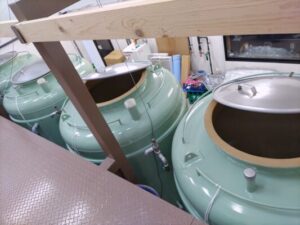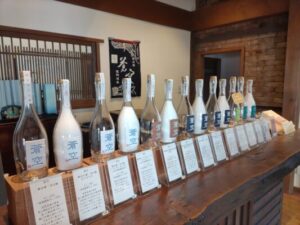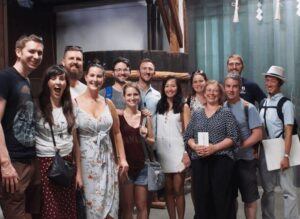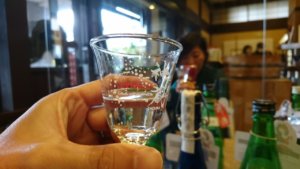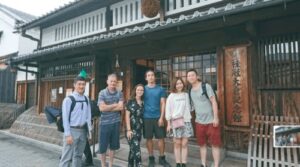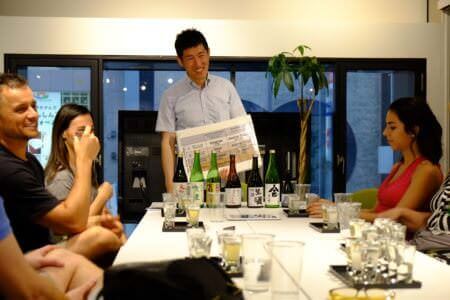One sunny day, we went a little further from Kyoto to the neighboring prefecture of Shiga. In this article, we would like to introduce basic information about each of the four breweries we visited and our favorite sake.
Furukawa Sake Brewery
The brewery does not use modern machines, but instead focuses on making sake by hand, using local Omi rice and other carefully selected ingredients.
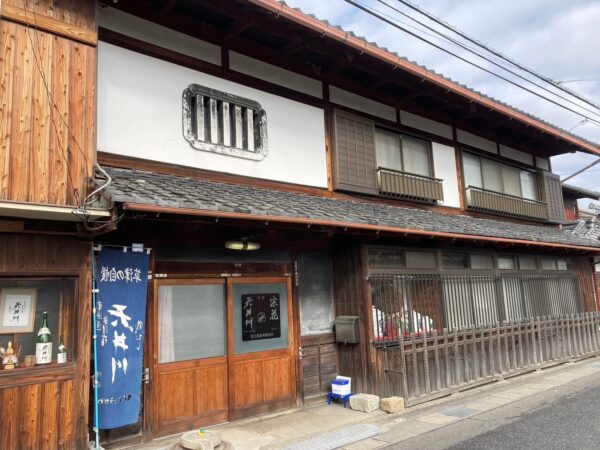
Located along the Tokaido Highway about a 15-minute walk from JR Minami-Kusatsu Station, the small but elegant old-fashioned building inside is a preview of the delicious sake that awaits you.
The Furukawa Sake Brewery offers many types of sake that are more robust, rich, and sweet than delicate, and we were served four types of such sake.
One of the most impressive was a special junmai nama sake made from 100% Omi rice rice “Mizukagami.
It has a fresh taste that is only available at this time of year.
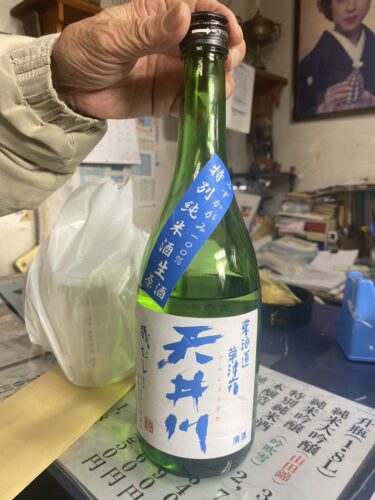
Furukawa Sake Brewery (古川酒造) Website / Google map
Ota Sake Brewery
This is another sake brewery located along the Tokaido Highway.
It began brewing sake at the beginning of the Meiji period (1868-1912), and produces a wide variety of sake, mainly “Doukan,” its main brand, named after its distant ancestor, the shogun “Ota Doukan.
In addition to sake, the company also sells wine made from grapes grown in-house, plum wine, and shochu.
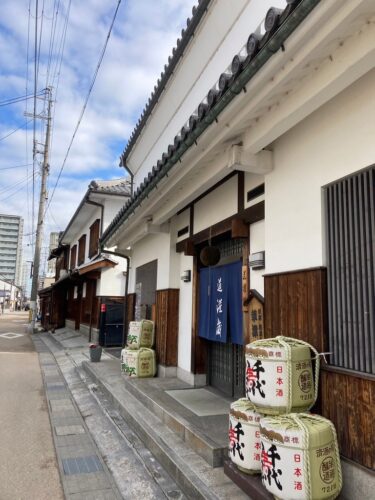
The building was very magnificent and the spacious store was filled with a wide variety of products.
Ota Sake Brewery mainly uses Yamada-Nishiki, Ginfukiyuki, and Watabune 6, which are rice suitable for sake brewing in Shiga Prefecture.
One of the many products recommended by the brewery’s toji was a special junmai (100% Ginfukiyuki) unfiltered, unadulterated, unpasteurized sake.
It is characterized by its rice flavor and mild, clean ginjo aroma, and at 15% alcohol by volume, it is an easy-drinking sake that is perfect as a food sake.
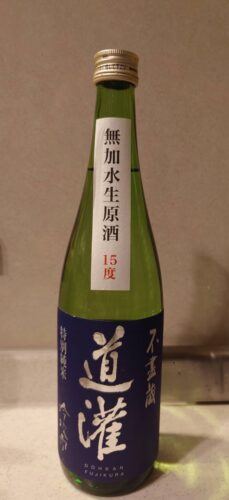
Ota Sake Brewery (太田酒造) Website / Google map
Mifuku Sake Brewery
Mifuku Sake Brewery is located along the Tokaido Road at “Mizuguchi Shukubajo”.
The brewery produces handmade local sake that is the best of both worlds: traditional Yamahai brewing using natural lactic acid bacteria and Ginjo brewing using modern technology.
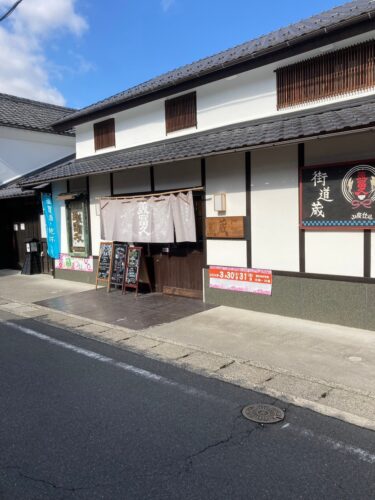
Inside the store is a café in a renovated old warehouse and a space on the second floor that displays old sake brewing tools, from which you can actually look into the fermenting tanks from above.
From spring to early fall, the brewery also offers tours of the brewery, which I would like to participate in next time.
Of all the sake I tasted at Mifuku Sake Brewery, the one I liked the best was the winter-only unfiltered Nama Sake “Deketate”.
This is a honjozo, and it had the freshness and gentle sweetness of rice that only new sake can have.
We tasted it cold, but we also recommend drinking it warm.
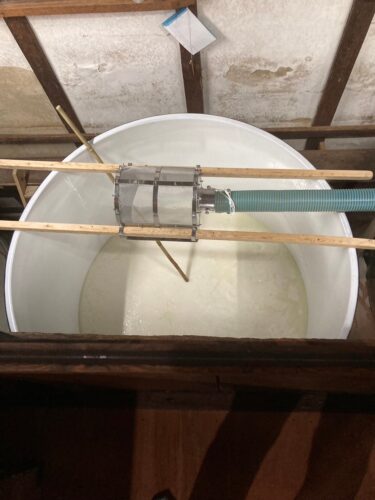
Mifuku Sake Brewery(美冨久酒造) Website / Google map
Kitajima Sake Brewery
The last brewery we visited was Kitajima Sake Brewery, which has been brewing Omi’s local sake in Konan City for about 200 years.
The Kitajima Sake Brewery is particularly particular about water. The brewery uses mellow, soft water from the Suzuka mountain range east of Lake Biwa for its brewing water, which brings out the flavor of the rice.
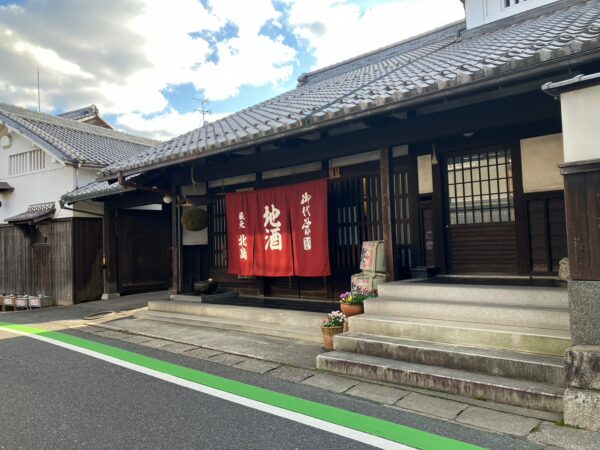
The water is the same as the brewing water, and you can actually sip it and drink it.
The water is the same as the brewing water, and you can actually sip it and drink it.
Among the sake brewed by Kitajima Sake Brewery, which uses mostly locally produced Omi sake, the bottle that left the greatest impression on me was “En,” a junmai sake brewed with natural yeast using Shiga Asahi.
It was a unique sake with a tangy and spicy flavor due to complete fermentation, a moderate acidity due to the use of the sake yeast, and a concentrated umami flavor in the aftertaste.
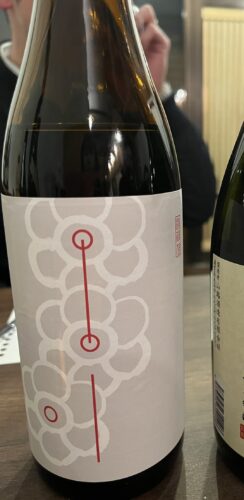
Kitajima Sake Brewery (北島酒造) Website / Google map
In Conclusion
This was my first visit to a sake brewery in Shiga Prefecture, and I was able to experience sake brewing and history that is different from that of Kyoto.
It was a good opportunity for me to realize once again that sake breweries and sake making is one of the elements that tell us about the culture and history rooted in the local area, and to feel the difference in the brewery’s thoughts and commitment in each sake.
When Visiting Fushimi Kyoto, Don’t Miss Our Sake Tasting Tour!
When visiting Kyoto, you can’t miss a sake tour of Fushimi – so why not join us on a hunt for the area’s best sake, and best combination with food pairing session and find your favourite along the way?
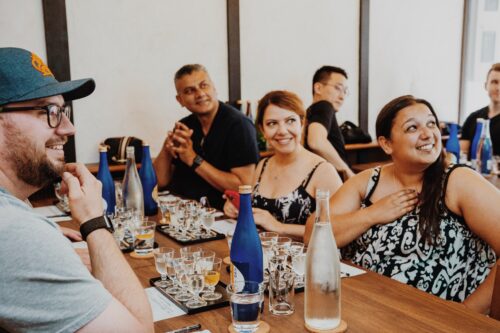
Visiting a bar or sake shop and don’t know which sake to buy or taste? Join our Sake Tasting and Pairing Experience!
In this experience, you will learn all the basics about sake and be able to compare different types of sake to find the differences and get to discover how to truly enjoy sake. Joining our sake tasting tour is surely a great introduction to your sake experience. Discover Japan’s real sake & food culture and traditions!
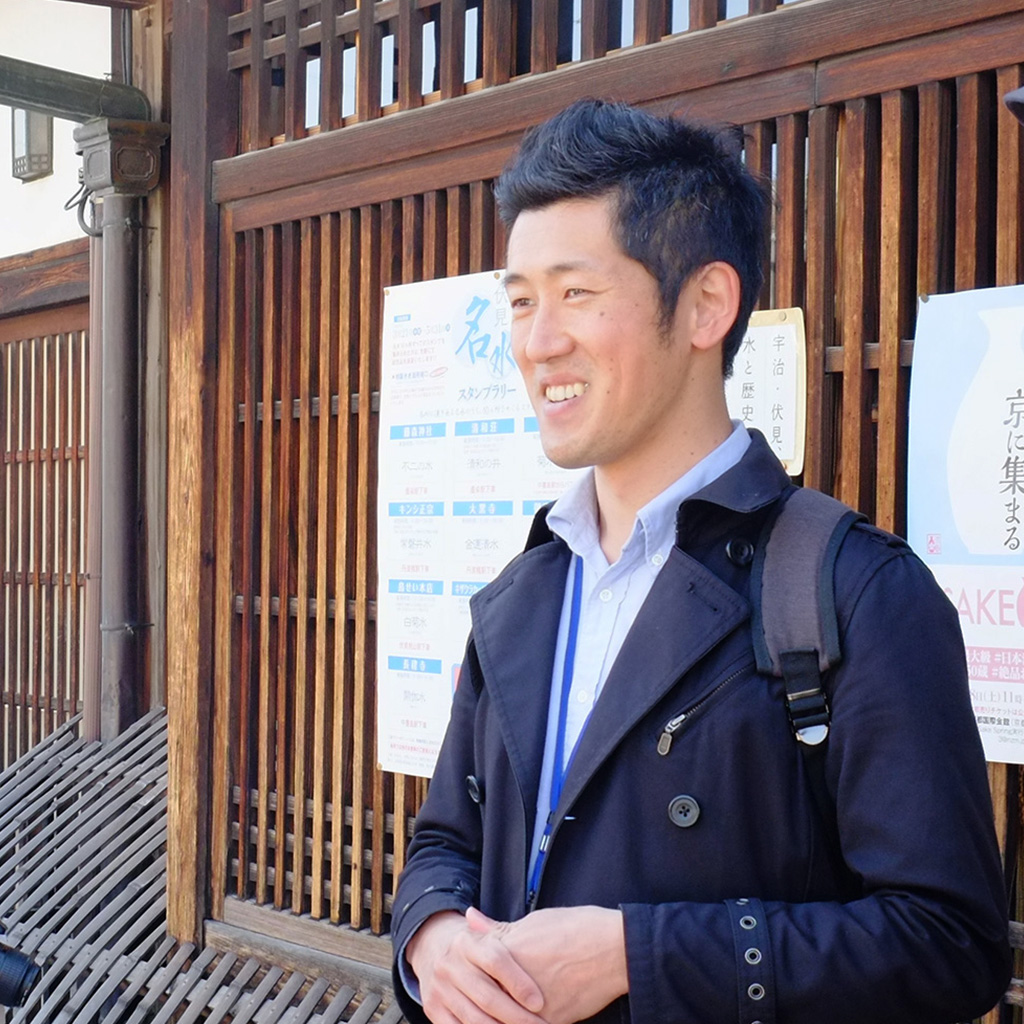
Name: Kotaro
Qualifications: Sommelier of sake
About me:
Founder of Kyoto Insider Sake Experience.
I got a hangover from the first sake I ever drank, which led to a long period where I didn’t drink sake at all. After returning from Australia, I gained some knowledge about sake and discovered its deliciousness and the joy of choosing different types. I’m passionate about sharing this experience with people all around the world.


